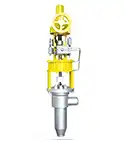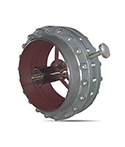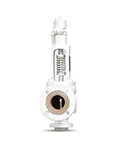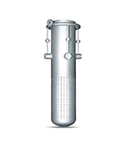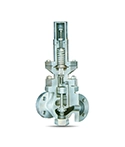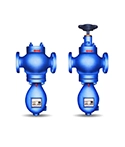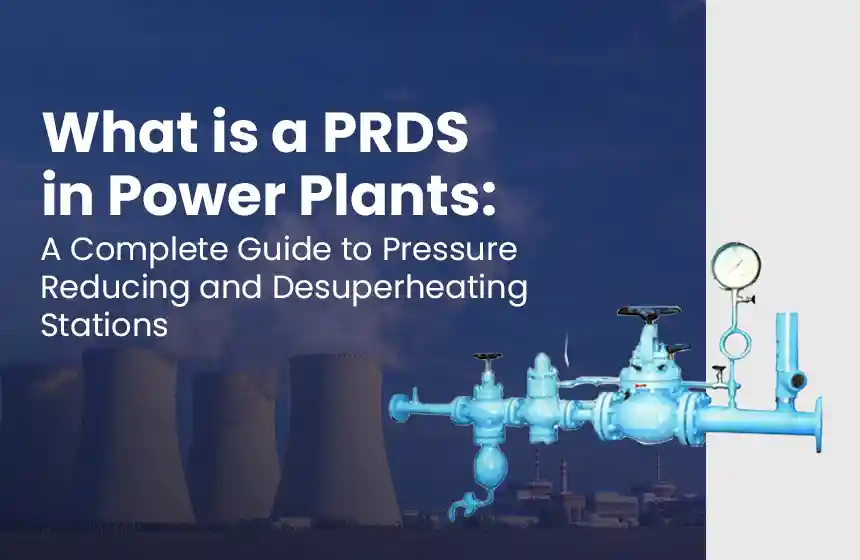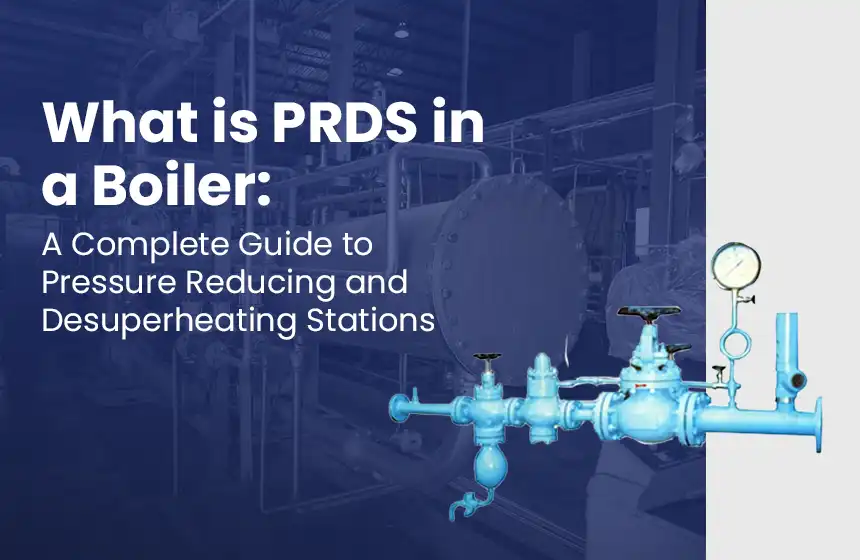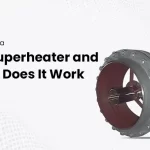
What Is a Desuperheater and How Does It Work
July 7, 2025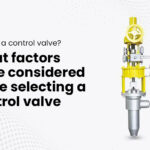
What is a control valve? What factors to be considered while selecting a control valve
July 11, 2025
What Is a Desuperheater and How Does It Work
July 7, 2025
What is a control valve? What factors to be considered while selecting a control valve
July 11, 2025Understanding Safety Relief Valves: Functions and Importance
In industrial settings where pressure systems are involved, such as boilers, compressors, and pipelines, safety is crucial and non-negotiable. A small mistake due to overpressure can be the reason for equipment damage, costly downtime, or life-threatening accidents. Here is where safety relief valves help as the silent protector of your industrial operations. So, whether you’re managing a chemical plant, oil refinery, or a steam boiler system, you must understand how these valves work. It will help you make the right decisions about equipment maintenance and process safety. In this blog, we will discuss everything about safety relief valves and their role in the industrial environment, including the boiler safety valve.
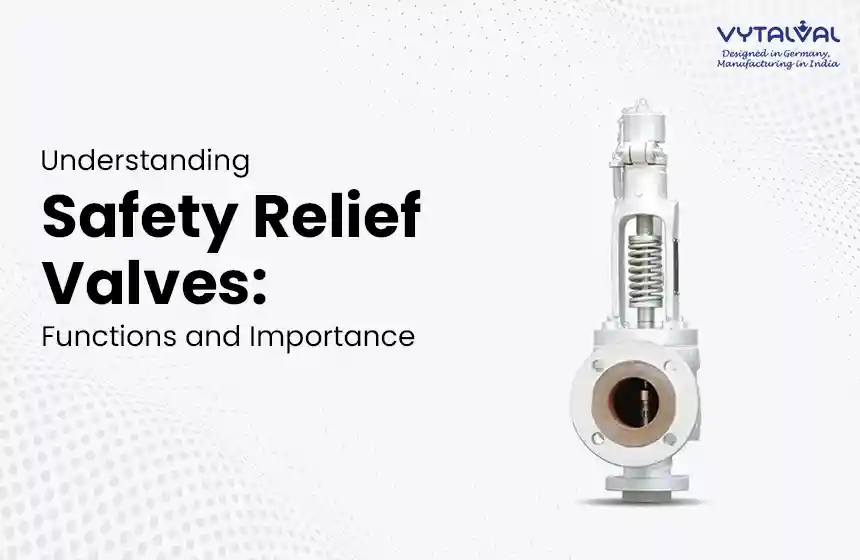
What are safety relief valves?
A safety relief valve is a special type of valve used to protect equipment and systems from dangerous pressure levels. Every pressurized system—such as boilers, pressure vessels, pipelines, or compressors—has a maximum pressure it can safely handle. If the pressure goes beyond this safe limit, it can cause serious damage, system failure, or even explosions.
The safety relief valve works automatically:
-
Normal Operation – The valve stays closed while the system is working within safe pressure limits.
-
Overpressure Condition – If the pressure rises above the set limit, the valve automatically opens.
-
Pressure Release – The excess pressure is safely released into the atmosphere or a safe discharge area.
-
Closing Again – Once the pressure returns to normal, the valve closes back to allow regular operation.
Why They Are Important:
-
Protect Equipment – Prevents damage to expensive machinery.
-
Ensure Safety – Avoids dangerous accidents and explosions.
-
Meet Regulations – Required by safety standards and laws in most industries.
In simple words, a safety relief valve is like a pressure safety guard. It only works when there is a risk, making sure your system always operates within safe limits.
Why is a safety relief valve important?
Safety relief valves are important for industries that transport gas, steam, or liquid under pressure, as there is always a risk of overpressure. This overpressure can occur due to various reasons such as:
- Equipment malfunction
- Blocked discharge lines
- Process errors
- Power failures
- Sudden temperature rise
What are the key functions of a safety relief valve?
Let’s understand the primary functions of a safety relief valve in simple terms.
1. The safety relief valve helps in pressure control by relieving excess pressure. If the pressure exceeds the specific limit, the valve automatically opens and releases the excess pressure to maintain safety.
2. As this valve controls overpressure, it helps prevent system failure, pipe burst, or an explosion scenario. It also maintains system integrity during pressure fluctuations.
3. Generally, all industrial codes, including ASME and API, mandate the use of safety relief valves for equipment that deals with pressure. So, if you fail to install or maintain them properly, you have to deal with fines or shutdowns. However, installing a safety relief valve protects you against it.
4. Usually, industrial processes involve dangerous chemicals or gases. So, uncontrolled release can harm the environment. Safety relief valve can ensure controlled pressure, so it minimizes environment impact and prevents contamination.
What are the types of safety relief valves?
They come in various designs and configurations to meet the specific requirements of different applications. Here are some common types.
1. Spring-Loaded Safety Relief Valve
They are most widely used and use springs to keep the valve closed. It only opens when the system pressure overcomes the spring force. They are cost-effective, reliable, and require minimal maintenance. These valves are suitable for liquid and steam systems
2. Pilot Operated Safety Relief Valve
Pilot-operated valves are used in applications where high flow rates or large discharge capacities are required. This valve uses the small pilot valve to control the main valve’s opening and closing. Whenever the pilot valve senses the system pressure, it operates the main valve accordingly. It offers better performance under high back-pressure conditions. These valves are ideal for high-pressure applications.
What are the applications of safety relief valves?
Safety relief valves are used across various industries such as:
- Oil and Gas – They are used to relieve pressure in gas pipelines, storage tanks, and refineries.
- Power Plants – In power plants they are used on steam boilers, turbines, and condenstate systems for pressure protection. Boiler safety valves important in power generation and protect against boiler failure.
- Pharmaceutical Manufacturing – In the pharma industry, safety relief valves are used to maintain product quality by preventing contamination and protecting sensitive equipment.
- Chemical Plants – They use various safety relief valves for pressure protection. Chemical reactions can produce sudden pressure spikes. These valves prevent reactor explosions and chemical releases.
Let’s understand one of the most critical applications of safety relief valves, which is in a steam boiler system. They are known as the boiler safety valves.
Boiler Safety Valves
Generally, boilers operate under intense heat and pressure. So, whenever a fault occurs, it can be the reason for dangerous pressure buildup. The boiler safety valve acts as the protective gatekeeper that opens instantly whenever internal pressure crosses safe limits.
- Boiler safety valves are important because:
- They prevent boiler explosions in steam systems.
- These valve ensures safe discharge of steam to the atmosphere or the condensate tank.
- They do not protect only the equipment but also the nearby workers
- Boiler safety valves are a key component in meeting boiler code standards, such as the ASME Boiler and Pressure Vessel Code.
Now that you understand what safety relief valves are, their types, and applications, let’s understand how they work.
How Safety Relief Valve Work?
The safety relief valve operates through four distinct phases to maintain system safety and pressure control.
1. The Sensing Phase
The safety relief valves constantly monitor system pressure. Its inlet port directly connects to the pressurized system. Pressure acts on the valve disc via this connection. The valve remains closed until the pressure stays below the set point.
2. The Opening Phase
When pressure crosses the set limit, the valve begins to open. The system pressure overcomes the spring force and holds the disc closed. Now, the disc lifts off its seat and creates a flow path. Pressure escapes through this opening.
3. The Discharge Phase
Once the valve is open, it allows pressure to escape quickly. The discharge continues until the system pressure drops. So, it ensures stable operation by protecting the system.
4. The Closing Phase
As the system pressure decreases, spring force pushes the disc back toward its seat. The valve closes when pressure drops to the reset pressure. It stops further discharge and allows the system to resume normal operation.
How to maintain and test a safety relief valve?
It is not enough to just install the safety valve; its regular inspection, calibration, and maintenance are also important to ensure functionality.
Here are some signs that show your safety valve may require servicing.
- The valve leaks constantly.
- It does not open at the set pressure.
- The valve does not reset properly after the release.
- Rust and debris buildup are visible.
Generally, annual testing is recommended, especially for boiler safety valves. The reason is that it faces harsh steam conditions. So, ignoring maintenance can cause the failure to open during an emergency.
Key factors to consider while selecting the right safety relief valve
When you choose the wrong valve, it can be as risky as having no valve. Here are some important factors to consider.
Here are some signs that show your safety valve may require servicing.
Set pressure – The pressure level at which the valve will open. Back pressure – Pressure in the discharge system that could affect the valve performance
Fluid type – gas, liquid, or steam, each requires different internal materials.
Temperature range – It must withstand operating conditions.
Size – The correct valve size ensures efficient pressure release.
Certified manufacturer – Always source your safety valve from a skilled valve manufacturer in India, like Vytal Control, who has experience. If you buy a poorly built valve, it may fail when you need it the most.
Signing Off
Safety relief valves are a simple but powerful device that ensures the safe operation of your pressure system and equipment. They respond quickly, work silently, and protect not just your equipment but also your people. These valves are an essential part of the safe operational strategy from oil refineries to pharmaceutical plants. The boiler safety valve can be the last line of defence between a safe environment and a system failure. Therefore, consult with experienced safety relief valve experts, such as Vytal Control, one of the trusted Control Valve Manufacturers in India. They will help you choose the right valve and adhere to industry best practices when dealing with valve selection, installation, and maintenance.


